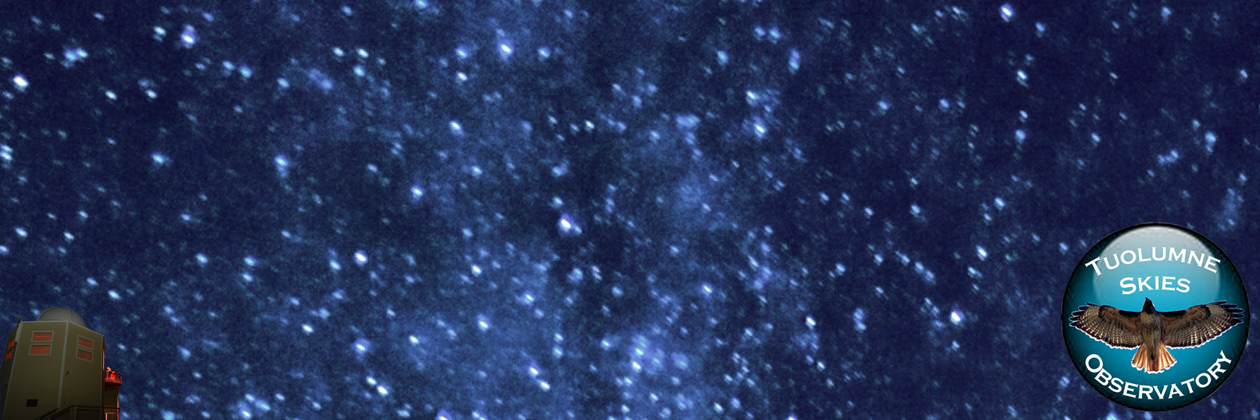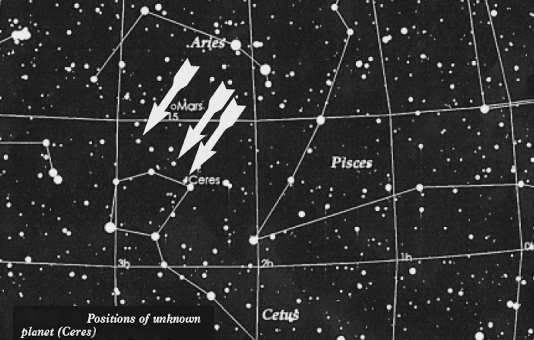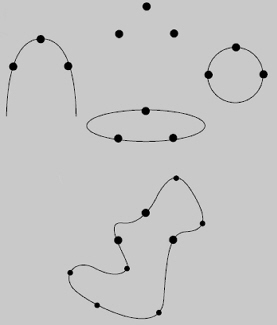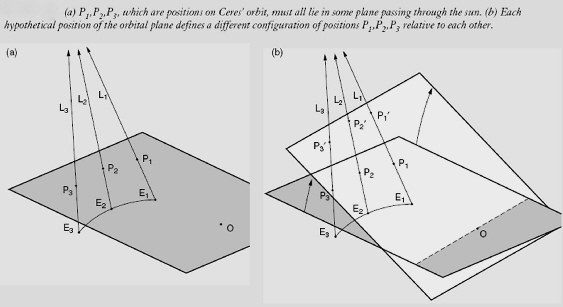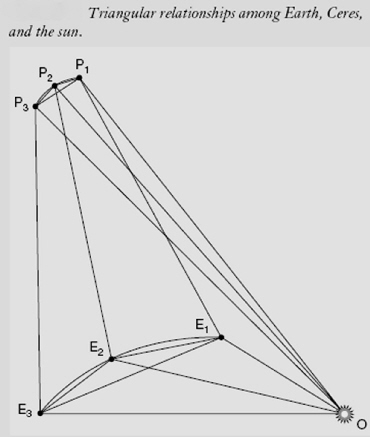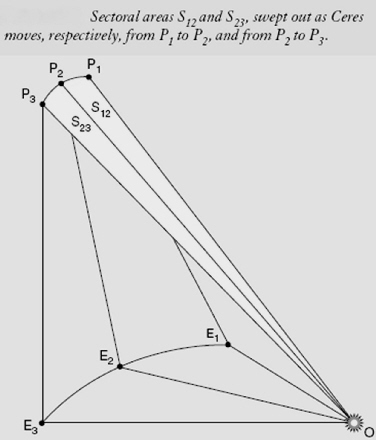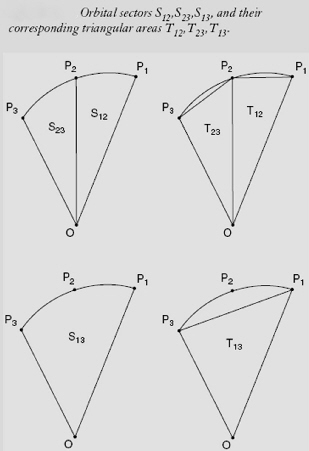What information did Gauss have to begin?
The Earth’s orbit was well known by the time of Gauss. So at the particular times of Piazzi’s observations, the observer’s position was known.
Gauss realized that these observations represented lines of sight for particular times. Therefore, Ceres must have lay somewhere along each sight line at the time of each observation. What was missing was to know how far away Ceres was.
The problem at first appears very difficult because an infinite number of curves may pass through 3 points.
